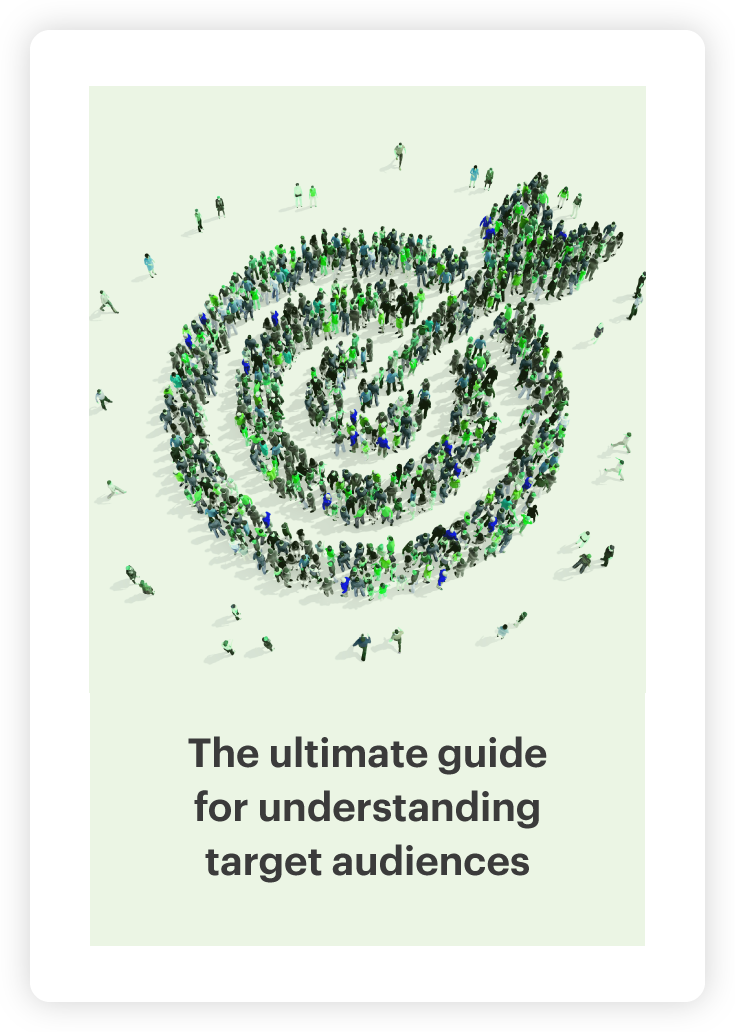The ultimate guide to enhancing target audience insights

Do you really, I mean really, know what your audience wants? Consumer behavior and enhancing audience insights shouldn’t be a guessing game. The data sources and tools exist for brands to pinpoint the exact opinions and preferences of different audiences – so why not utilize them?
Understanding an audience and its various demographic segments in relation to opinions and purchasing behavior gives your brand the insight to confidently make strategic decisions. Decrease customer churn, increase customer lifetime value and personalize the consumer experience through audience insights marketing and analysis.
Ask Questions
Before we get anywhere near analysis, we need to set goals. And we do that by asking the right questions.
They can be specific, like:
- How do online shoppers differ from in-store customers?
- Why are 18-24 year-olds making fewer purchases?
- Why has recent controversy impacted brand perception?
- As a US brand, how can we market to new audiences in the UK?
- Why has customer satisfaction improved since the release of a new product?
- Why are sellers choosing certain online marketplaces?
These specific questions are typically tied to known areas of interest. We’re looking to understand the how and why behind the what.
Or these questions can be more general:
- What do consumers like about our brand?
- What do prospective customers want/need from a product?
- What ages/locations/etc. does our brand appeal to the most?
- What interests are tied to consumer groups or demographics?
- Where and how do consumers make purchases?
General questions are more focused on the what. We want to discover unknown issues and opinions that we can later explore with specific inquiries.
Data Sources
The next step is, of course, the data. There are a few different channels to obtain consumer feedback for audience insights. We suggest looking at internal sources like surveys and customer service interactions or external channels including social media, reviews and forums.
Internal data sources give you more control over responses. Brands have the power to develop questions relevant to business goals and known areas of interest. When you choose what consumers discuss, you’re more likely to discover relevant audience insights.
Not to be ignored, external feedback channels offer an exploratory opportunity. When you set the conversational agenda, important feedback could go undiscovered. Authentic external commentary is 100% organic, potentially bringing to light topics and opinions otherwise unknown.
Ensuring Quality Data
The perfect data set will poll a large, representative sample of consumers and contain no biased or inauthentic reviewers. That level of perfection is hard to achieve, but not always necessary. It’s possible to discover valuable and accurate insights even within imperfect data.
That being said, you should always try to minimize the influence of poor quality responses by following principles of good research design including:
- Cleaning data to remove spam and duplicates
- Obtaining as many words/responses as possible
- Ensuring the sample is representative of your audience or target segment
- Knowing if feedback was incentivised
Remember to approach analysis with a critical eye. If it sounds too good to be true, it might be. Text analytics tools do the heavy lifting, but still require a human touch to produce pinpoint audience insights in marketing.
Audience Demographics
Good data isn’t just about the responses, it’s about the respondents. The most meaningful insights are tied to what people say and who they are. The correlation between an opinion and a consumer profile produces visible trends, in turn enhancing insights into these audiences.
It can be useful to record consumer attributes, including:
- Age
- Location
- Gender
- Date of purchase
- Item(s) purchased
- Overall rating
- Income range
- Level of education
- Review channel
During analysis, you might see a number of consumers saying they have trouble finding your product stocked in store. Without location information for each reviewer, you can only assume this issue exists across all geographic markets.
With the additional layer of location information, you can see this problem is only occurring in New York. Now you have the insight to focus distribution efforts on the East Coast – and not the entire country.
Audience insights in marketing can also inform brand messaging and communications. Understanding the unique voice and opinions of a demographic can shape marketing efforts, in turn producing resonant communications.
How To Analyze Audience InsightS Data
Relative Insight is the key to unlocking the most value from your audience feedback data. Through natural language processing, our technology sifts through any textual data source to pinpoint the statistically significant topics, words, phrases, grammar and emotion.
Relative Insight discovers what we call the unknown unknowns – the insights you don’t know to look for. Our platform uncovers themes across audiences, locations, time periods and more. Automated tools streamline the analysis process, saving you time and money on outsourced research firms, while also enhancing the audience insights you uncover.
What Makes Relative Insight Different?
Our comparative approach to text analytics delivers what frequency analysis ignores – contextual understanding. Relative Insight compares two or more written data sets to discover what makes each unique. These critical differences provide an additional layer of context that weeds out common language you can expect to see from either audience.
For example, let’s say you’re an athletic brand looking to design a new line of running shoes. To do so, you want to understand the difference between the needs of sprinters and long distance runners. If you were to complete a frequency analysis on the entire set of data, you’ll likely only see comments that apply to both types of runners – ie. comfort, color, price, etc.
While those are useful insights, they don’t help us understand how to design a shoe specifically for a long distance athlete. By comparing reviews by sprinters to distance runners, we see the unique needs of each. You might find that sprinters want lighter shoes with more traction, and distance runners need arch support and cushioning – but aren’t as concerned with weight.
Your audience is unique, and it’s about time you discovered why. The same product and messaging won’t resonate with all audiences. Learn how to tweak your brand and customer experience to appeal to a range of different consumers with enhanced audience insights marketing.
Case study: Analyzing open-ends to crack the enigma of Generation Z
